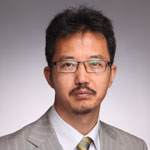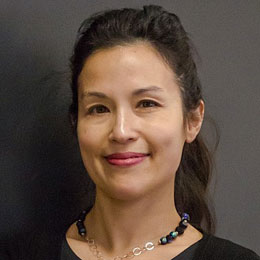Safe nuclear power generation another hallmark of Chinese ingenuity
“Going Nuclear” has many meanings but according to the urban dictionary it also means “going full throttle”. China is indeed going nuclear to curb a number of issues by utilizing nuclear technology. Firstly, to combat climate change by shifting towards cleaner energy sources, secondly to meet electricity demands of the future, thirdly to lead the way in nuclear technology around the globe.
Most of the countries around the world are finally making efforts to curb their carbon foot print and at the same time meet their energy demands. In order to do this renewable energy sources like and wind and solar are options but yields from such sources is not continuous as solar energy is dependent on the Sun and Wind energy is dependent on wind speeds both of which are not continuous. The other clean option is nuclear, which is continuous and is the reason why many countries are contemplating over establishing nuclear power plants which are safe. Chinese top leadership and experts foresaw this and didn’t delay in taking the right actions.
![Staff members prepare for the dome installation at No. 5 unit of Fuqing Nuclear Power Plant in Fuqing, southeast China's Fujian Province, May 25, 2017. As the containment dome installation was completed in Fuqing on Thursday, China's first demonstration nuclear power project using Hualong One technology, a domestically developed third-generation reactor design, has taken shape. [Photo: Xinhua]](https://p3crires.cri.cn/01dcri/images/zhycms_chinaplus/20170925/ccdce046-f2b9-42dc-8511-3b06082aaa02.jpg?x-oss-process=image/resize,w_650)
Staff members prepare for the dome installation at No. 5 unit of Fuqing Nuclear Power Plant in Fuqing, southeast China's Fujian Province, May 25, 2017. As the containment dome installation was completed in Fuqing on Thursday, China's first demonstration nuclear power project using Hualong One technology, a domestically developed third-generation reactor design, has taken shape. [Photo: Xinhua]
In August 2013 the State Council said that China should reduce its carbon emissions by 40-45% by 2020 from 2005 levels, and would aim to boost renewable energy to 15% of its total primary energy consumption by 2020. In November 2014 Premier Li Keqiang announced that China intended about 20% of its primary energy consumption to be from non-fossil fuels by 2030. This 20% target is part of the 13th Five-Year Plan and was recapped by President Xi Jinping at the Paris climate change conference in December 2015, along with reducing CO2 emissions by 60 to 65% from 2005 levels by 2030. This meant that China’s energy growth had to enter a ‘new normal’ phase including environmental protection. In order to cope with this, vital development of nuclear power is required. That is why the Chinese government has been very serious about enhancing research and development spending to leap frog on the ladder of technology and innovation, with these increased spendings China aims that by 2030 its nuclear capacity will be 120 to 150 GWe, and nuclear power sources will provide 8% to 10% of electricity.
The important thing to note here is that, almost all the nuclear power plants responsible for the 8-10% of electricity in China will be the most modern and safest in the world. With such technological advancements China is not only gearing up to transform its own energy sector but is also ready to export this technology. Apart from exporting nuclear technology other countries can also learn from China in the fields of nuclear energy, nuclear safety and nuclear science and applications as China is willing to assist the International Atomic Energy Agency in their training programs to train and to provide technical assistance in the above mentioned fields.
Currently China has 37 nuclear power reactors in operation, about 20 nuclear plants are under construction, and furthermore are about to start construction. The reactors which are under construction comprise of some of the world's most cutting-edge technologies, to give a 70% increase of nuclear capacity to 58 GWe by 2020-21. The next target is to further enhance production to 150 GWe by 2030, and much more by 2050. As mentioned above this motivation behind nuclear power in China is due to air pollution from coal-fired plants and to reduce China’s carbon footprint. In comparison with other countries, China has become largely self-sufficient in reactor design and construction, as well as other aspects of the fuel cycle, and is making full use of western technology while adapting and improving it, China’s strength lies in the nuclear supply chain which will greatly help China in exporting nuclear technology to the world.
Already China has overshot almost all of the global competition in terms of nuclear technology. Thanks to the Chinese government’s commitment towards taking the lead in nuclear technology under the directives of President Xi, the western companies like Bill Gates’s TerraPower LLC, Canada’s SNC-Lavalin, Oak Ridge National Laboratory and many more are flocking towards China to share their knowledge with China. This sharing of knowledge helps the Chinese scientists to not only gain access to the latest technologies in the world but also gives them the opportunity to improve upon it, which is exactly what China has done with the AP1000. The AP1000 reactor consists of fourth generation nuclear technology which is 100 times safer, requires 80 per cent less piping, 85 per cent fewer control cables, and need a third fewer pumps, the Chinese scientists have combined the APR1000 with EPR to develop their own “Hualong design” reactor which is an improvement upon the AP1000.
According to experts the Hualong Design is a brilliant solution to reduce the risk of nuclear meltdown as it is practically fail proof. Now China is in a position to not only develop the latest technologies in nuclear power but is also striking deals around the world for exporting it. Already China has exported the Hualong Design reactor to Pakistan whose installation in Pakistan will be complete by the year 2021. China is also in finalizing a similar deal with the UK and the deal is expected to materialize soon as China has helped finance the $24 billion Hinkley Point nuclear project in the UK. According to Professor Shan of Xi’an Jiatong University, “The heyday of the U.S nuclear industry was in 1970s. They were our role model, but all those talents are now retired or gone. The current generation is no longer able to build a new plant due to the lacking of engineering experience and technical expertise. It is sad.”
The International Atomic Energy Agency (IAEA) fully recognizes China’s nuclear advancements and last month they sent a team to inspect China’s nuclear power facilities for safety and standards and found them to be fully fit. This was possible owing to the swift precautionary actions taken by the Chinese government following the Fukushima disaster in 2011. The China Atomic Energy Authority (CAEA) is garnering great importance owing to its impeccable track record and strict security and safety protocols. On the 18th of September IAEA's 61th General Conference in Vienna, Austria took place, where CAEA remained prominent. Tang Dengjie, head of the Chinese delegation to the conference was the most sought after person owing to China’s advancements in nuclear technology with one of the best safety records. Tang Dengjie stated in his address that the Chinese government carefully plans for the safety of nuclear facilities routinely and recently “The Nuclear Safety Law, which was passed earlier this month by China's top legislature or the National People's Congress, will provide a strong support for the safe and sustainable development of nuclear energy in China.” On the sidelines of the IAEA's 61th General Conference in Vienna, Austria the CAEA pledged to train experts from across Asia in the various peaceful uses of nuclear technology, under an agreement with IAEA. Once the agreement was reached, Massoud Malek, programme management officer at the IAEA’s technical cooperation programme said, “This practical arrangement represents a big step in training on the peaceful uses of nuclear technology in Asia and the Pacific.”
The key to remaining ahead of the game in the nuclear energy market is continuous research coupled with government support. The Chinese government under President Xi’s leadership is committed towards both. Which is why, China is developing a wide range of new nuclear energy technologies, ranging from 200-300 megawatt reactors which will be equipped to be housed on ships and even aircrafts, to reactors which will be “pebble-bed” with ceramic-coated fuel units that form the reactor core, improving efficiency. Shanghai scientists are also endeavoring towards a “molten salt” reactor, which will be a much cheaper and safer option as compared to existing installed reactor technologies around the world. The waste in this molten salt reactor will come out in the form of salt. With China’s advancements in nuclear technology and work on the Belt and Road Initiative underway, China can endeavor to furnish an untapped market of nuclear power worth 4 trillion yuan ($580 billion), this market is can be traced on the route of the New Silk Road.
(Dr. Shafei Moiz Hali studied at George Mason University, Virginia, USA and specialized in the field of International Commerce and Policy. He did his PhD from Huazhong University of Science and Technology, Wuhan, China specializing in Chinese foreign policy focusing on the Belt and Road Initiative and energy issues. Currently Dr. Hali is an Assistant Professor at the National Defence University (NDU), Islamabad, Pakistan with the department of Government and Public Policy.)






